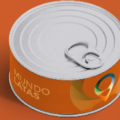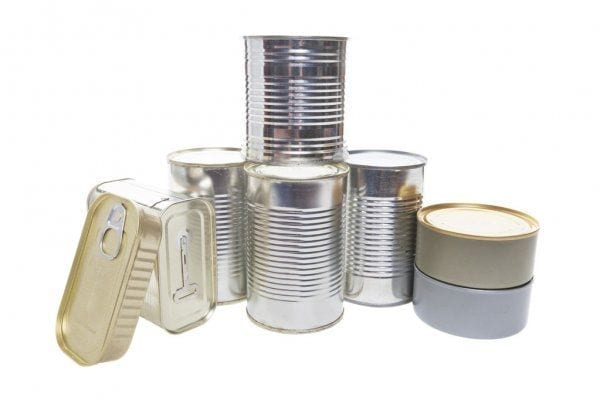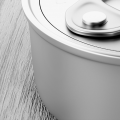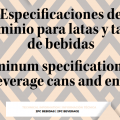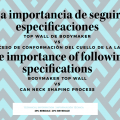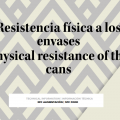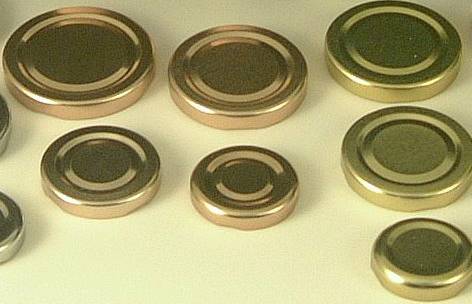One of the problems that usually appears in the manufacture of closures is the change of some of the elements that make up the technical specification of a closure, since this can cause mismatches that affect its final quality and its behavior in the process of assembly to the container and its behavior in relation to the different products used in the canning process.
It is therefore necessary to establish a “homologation” system for the evaluation of the new manufactured covers, avoiding differences in behavior that may affect the conditions of use or their final use.
TECHNICAL ASPECTS TO BE CONSIDERED
The first thing to consider is the different technical aspects that may affect the behavior of the caps.
–THICKNESS: Variation by more or less than the nominal thickness beyond the established tolerances.
– HARDNESS:
– Change in the Tempering, going to a lower value, according to the European standard in force.
– Change in the Elastic Limit of the material by more than 50 Mpa.
– DESIGN:
– Change in the distribution and/or dimensions of the various panelling components.
– Change in the design of the flange of the cover.
–VARNISH: Changes in the characteristics of varnish applications or use of new varnish applications not previously used.
–COMPOSITE: Changes in the type or characteristics or applied weight of the rubber used.
In each of the above cases we will have to apply a different analysis methodology, prior to the start-up of mass production.
1.1. OPERATIVE FOR CHANGES IN THICKNESS, HARDNESS AND DESIGN
The aspects to be controlled for the changes proposed in the new design are the following:
– METROLOGY. – Carry out a metrological control of the dimensions likely to change with the new design. For this purpose, a profile must be made from each of the dies with the new material at the ends.
If the change is in the panelling of the cover, the adjustments to the closing mandrel should be checked (dimensions and PASS – NO PASS), and if applicable, if there is any impediment between the design of the mandrels and the established panelling design.
If the change is in the flange (or in the cover tray), a sealing process and a dimensional study of the same should also be assessed to see how the proposed changes affect the tightness of the seal, and also to evaluate if the use of the covers in the feeding of the sealers is affected.
– RESISTANCE. – Study of the mechanical resistance of the modified cover, to assess the non-return pressure (NRP) as well as the peak pressure (PP).
– CLOSINGS. – Statistically evaluate changes in the dimensions of the different components of the closure, also evaluating possible internal defects that appear centered on the hook of the cover. should be done on a sufficient number of 50 tests for each of the dies that make the changes, in order to be able to establish a statistical study of the results, evaluating aspects such as dispersion and machine capacity, to keep the results within the established limits.
1.2.OPERATIVE FOR CASES IN WHICH THE CHANGE IS ONLY OF VARNISH APPLICATIONS.
We will evaluate those effects that affect the physical and chemical resistance of the varnishes:
–PHYSICAL STRENGTH: Fundamental aspects of varnish behavior, such as hardness, adhesion, porosity and flexibility, should be evaluated before and after autoclaving for at least 60 minutes at 121º C (≅1 Atm).
– CHEMICAL RESISTANCE: We must evaluate the behavior of the varnish against steam and salt-based simulating liquids, in different organic acids (citric acid, acetic acid and/or lactic acid) and in sulfurizing products, evaluating its behavior compared to similar caps with the varnishes usually used, after a sterilization process.
Depending on the importance of the change and the confidence we have in the different simulant liquids used, we would have to extend the homologation to the filling of containers with these new caps and different packaged products, proceeding to an aging process in an oven at 37-40ºC and evaluating the behavior in openings over different periods of time. This system represents a longer evaluation time, since until the whole process is finished, the new varnish application cannot be put into production.
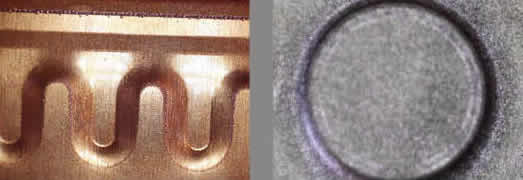
Left image: Formation of “bubbles” (blistering) in weakened areas of the pannelling due to acid attack.
Right image: Sulfuration stains in varnish homologation test.
1.3.OPERATIVE C: FOR CASES OF RUBBER REPLACEMENT
For a new rubber, as in the case of varnishes, we must evaluate the aspects of physical resistance and chemical resistance.
–PHYSICAL STRENGTH: The main aspect to consider is adhesion on metal or varnish of the cover. It is necessary that the rubber adheres to the internal surface of the cover, so that it does not move or come undone during the sealing process, for which it is necessary to ensure that once it has dried according to the manufacturer’s conditions and after at least 72 hours from its application, the rubber does not come off easily. It is necessary to check the correct distribution (without lumps or mounds) in the application and the absence of bubbles or faults that could cause failures in the tightness of the seal.
In the same way, we must check that the rubber remains inside the seal after the sterilization process and that it does not extrude inwards (see photograph). 3) or outside the package (photo 4) as a result of the processes of pressures and back pressures in the autoclave. By sterilization for at least 60 minutes at 121°C (≅1 Atm).
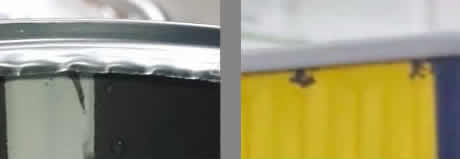
Left image: Rubber outlet to the inside.
Right image: Rubber outlet to the outside.
- CHEMICAL RESISTANCE: We must evaluate the behavior of the rubber against steam and liquids that may affect it before and after sealing, such as direct steam or oil, before and after an autoclave sterilization process for at least 60 minutes at 121º C (≅1 Atm).
In all cases, the different tests to which the caps are subjected for the process of homologation of the changes must be carried out simultaneously with caps of the usual specifications, in order to be able to compare the results and thus see the improvements or disadvantages that the changes to be made may cause.


